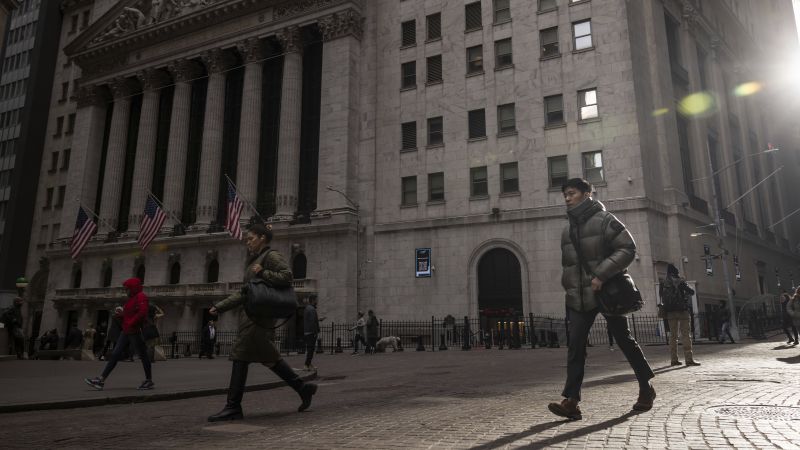US stocks were lower Thursday afternoon after the latest GDP report showed that US economic growth slowed to 1.6% in the first quarter of the year, a much weaker pace than expected.
The Dow fell by 441.1 points, or 1.2%; the S&P 500 was down 0.8% and the Nasdaq Composite slid by 1.1%, as investors projected a longer wait for the first rate cut from the Federal Reserve.
“This report was the worst of both worlds: economic growth is slowing and inflationary pressures are persisting,” wrote Chris Zaccarelli, chief investment officer at Independent Advisor Alliance, in a note Thursday morning.
Economic growth appears to be floating back down to earth after notching a very strong second half of 2023. GDP grew by 4.9% and 3.4% in the third and fourth quarters of last year.
At the same time, Thursday’s data showed that inflation accelerated in the first three months of the year: The annualized GDP chain price, which measures how much prices have gone up or down in the economy, helping to track inflation, jumped from 1.6% up to 3.1%.
“The Fed wants to see inflation start coming down in a persistent manner, but the market wants to see economic growth and corporate profits increasing, so if neither are headed in the right direction then that’s going to be bad news for markets,” wrote Zaccarelli.
Those sticky inflation rates have pushed investors to slash their expectations for interest rate cuts by the Fed. They’re now anticipating just one cut this year, according to the CME FedWatch tool. That’s down from an expectation for six at the beginning of the year.
It’s also brought back fears of stagflation — when the economy stops growing but inflation persists.
In a talk at the Economic Club of New York on Tuesday, JPMorgan Chase CEO Jamie Dimon warned investors about a potential period of stagflation.
“Stagflation has the negative effect of no growth and inflation. That hurts profits and consumers and jobs. And yes, I think there’s a chance that could happen again,” he said. “I worry that it looks more like the 1970s than we’ve seen before.”
Between 1966 and 1981, a period encompassing much of the stagflation era, investors in the US stock market lost more than 35% after adjusting for inflation, according to analysis by Ben Carlson at Ritholtz Wealth Management.
Tech stocks also tumbled Thursday as investors worried that a slowing economy could hurt their growth prospects, in an already tense earnings season.
Shares of Meta dropped more than 11.4%. Microsoft fell by 3.2% and shares of Amazon were down 2.4%.
This is a developing story and will be updated.
Read the full article here



